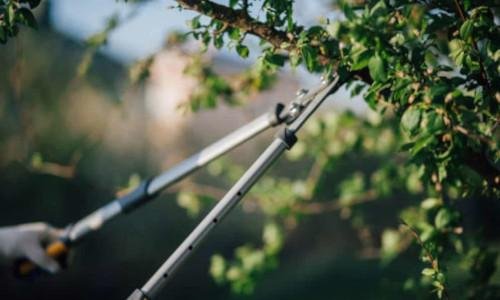When you think about tree care, what comes to mind? For many, it’s the dramatic image of a massive tree being felled—chainsaws buzzing and timber crashing. But the world of arboriculture is much more nuanced than just removal. In fact, one of the most vital services for maintaining healthy, beautiful, and safe trees is often overlooked: professional tree trimming.
This isn’t just a matter of hacking away at overgrown branches. True tree trimming is a careful blend of science and art, requiring a deep understanding of tree biology, growth patterns, and long-term health. It’s about making precise cuts that encourage strong growth, prevent disease, and ensure the tree remains an asset to your property for years to come. This post will explore the hidden complexities of tree trimming and reveal why this preventative measure is one of the smartest investments a homeowner can make.
The Unseen Impact of a Single Cut
It’s easy to underestimate the importance of a well-placed snip. A single improper cut can create a wound that the tree cannot heal, leaving it vulnerable to pests and diseases that can eventually lead to its demise. On the other hand, a strategic cut can redirect growth, improve airflow, and increase sun exposure to the inner branches, fostering a healthier, more robust tree.
This is where the expertise of a professional arborist becomes invaluable. They don’t just see a branch that needs to be shortened; they see the tree’s entire circulatory system. They understand that each cut sends a signal to the tree, influencing everything from fruit production to its ability to withstand a storm. For Tactical Trees—those situated near homes, power lines, or other structures—this precision is not just beneficial; it’s essential for safety.
It’s About Health, Not Just Aesthetics
While a well-shaped tree undoubtedly boosts curb appeal, the primary goal of professional tree trimming is health and safety. Arborists perform several types of trimming, each with a specific purpose.
1. Cleaning and Crown Thinning
This is the most common type of pruning. It involves removing dead, dying, or diseased branches. Deadwood is not only unattractive, but it also poses a significant risk as it can break off and fall at any moment. By selectively thinning the crown, an arborist improves air circulation and light penetration, which helps reduce the likelihood of fungal growth and other diseases. This process is delicate; removing too much can stress the tree, while removing too little fails to provide the full benefit.
2. Structural Pruning
Especially important for young trees, structural pruning helps develop a strong and stable framework. An arborist identifies and corrects potential weaknesses, such as competing main stems or branches with weak attachment points. By guiding the tree’s growth early on, you can prevent major structural problems down the line that could require costly interventions or even full removal. Think of it as setting the foundation for a long and healthy life.
3. Raising and Reduction
Crown raising involves removing lower branches to provide clearance for buildings, vehicles, or pedestrians. This is common in urban and suburban settings. Crown reduction, conversely, is used to decrease the overall size of the tree. This is a complex procedure often performed on mature trees that have outgrown their space. Unlike “topping”—an outdated and harmful practice of indiscriminately cutting the top off a tree—reduction is done with careful cuts that preserve the tree’s natural shape and health.
The Risks of a DIY Approach
The availability of chainsaws and ladders might tempt some homeowners to tackle tree trimming themselves. However, the risks associated with this work are substantial. The Tree Care Industry Association (TCIA) notes that arboriculture is one of the most dangerous professions, and that’s for trained experts with specialized safety gear.
For an amateur, the dangers are even greater. Misjudging the weight of a branch, using improper equipment, or making a poor cut can lead to serious injury or property damage. A branch that seems manageable can swing unpredictably or fall in an unintended direction. Furthermore, a DIY job can inadvertently harm the tree, leading to decay, infestation, or an unstable structure that becomes a hazard later.
When you hire a professional, you’re not just paying for their time; you’re paying for their expertise, insurance, and the peace of mind that comes with knowing the job is done safely and correctly.
The Financial Wisdom of Maintenance
Many homeowners view tree care as an expense to be avoided until a problem becomes unavoidable, like a fallen limb or a diseased tree that needs removal. However, preventative maintenance through regular trimming is almost always more cost-effective.
Emergency tree removal, especially for large or hazardous trees, can cost thousands of dollars. In contrast, routine trimming costs a fraction of that and can prevent the very issues that lead to expensive removals. A healthy, well-maintained tree is also a valuable asset. Studies have shown that mature, healthy trees can increase a property’s value by as much as 15%. By investing in proactive care, you are not only protecting your property but also enhancing its worth.
A Legacy of Health
Tree Trimming is a proactive investment in the health, safety, and beauty of your property. Proper trimming ensures your trees remain strong, vibrant, and hazard-free while enhancing shade, aesthetics, and overall landscape value. By working with certified arborists to implement a regular maintenance plan, you protect your trees from disease and structural issues, prevent costly emergencies, and ensure they continue contributing to your home’s charm and functionality for decades. Professional tree trimming preserves your investment and creates a safer, more visually appealing environment.







